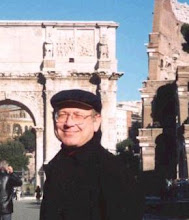Modern money is created by debt and therefore the supply of our money fluctuates with the amount of debt that exists in our economy. An economy expands into a boom period when people are sinking deeper into debt and it contracts into a recession when people are acting responsibly and paying down their debt. The irony of our modern monetary policy is that recessions are the result of people climbing their way out of the hole of debt that they have dug themselves into and economic booms are really just artificial bubbles that are the result of people borrowing money that they will eventually need to repay.
Whereas at one time money was a made out of something that had an intrinsic value, such as gold, most of today’s money is just a claim to a debt between a bank and one of its borrowers. When the amount of debt goes up, the claims to those debts increases and thereby increases our money supply; when the amount of debt decreases, the money supply decreases.
How does debt turn into our money supply? A small portion of our money is real; it is printed currency and does not represent someone’s debt. However, this currency represents only a small fraction of our money supply, serving as only a seed to vast amounts of money that is produced by our private banks. Our real money supply, known as M1, includes this currency, regardless of whether it is in your pocket or your checking account. However, when that currency is deposited in your checking account it no longer exists as currency. The bank has loaned most of this currency to a borrower who now has it in his pocket. That money that counted as part of M1 when you deposited in your bank still counts as part of M1 but it again counts as part of M1 when it is in the borrower’s pocket.
The currency cannot exist in two places, but the bank fraudulently represents that it exists in both the borrower’s pocket and in your deposited account. The bank, using its ability to produce account balances on paper, has effectively duplicated the money that originally existed as currency. The original amount of currency still exists, but there is twice the amount of money on paper. On paper, the original currency has been duplicated.
The money that has been duplicated gets duplicated again when the borrower deposits the money in his account and it gets loaned out again. This process continues until eighty percent of the money in the economy has come into existence only through the making of loans by the private banks. The money that we believe we are spending is largely just a debt that can evaporate when the borrower chooses to “Neither a borrower nor a lender be.”




